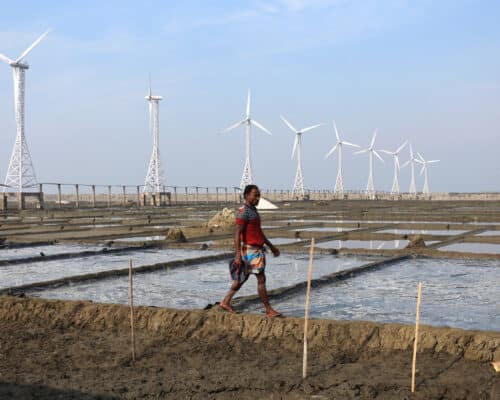The State of Renewable Energy in Bangladesh – Slow Transition, But Big Potential
02 July 2021 – by Viktor Tachev Comments (0)
Data by the World Bank for 2019 shows that Bangladesh was ranked 5th for the countries with the biggest GDP growth rate. The economic flourishing will continue in the post-pandemic period. The booming economy, paired with the fact that Bangladesh is one of the most densely populated countries globally, naturally raises the question of how it plans to address its energy needs. While fossil fuels are currently dominating, renewable energy in Bangladesh is starting to pick up pace. Not only because of ambitious green energy plans or net-zero commitments but also because of its relatively limited presence today.

The Energy Profile of Bangladesh in 2020
Fossil fuels, including natural gas, coal, and oil dominate the energy mix of Bangladesh. Among these, natural gas is the most dominant, accounting for as much as 76% of the electricity generated in the country. Going forward, Bangladesh will rely increasingly on imported LNG and coal due to shrinking local supplies.

While coal plays a negligible role in the overall mix (under 2% as of 2015), several new plants are currently under development. Since 2010, the government has approved 18 GW of coal capacity, but only 5 GW had been installed by 2020.
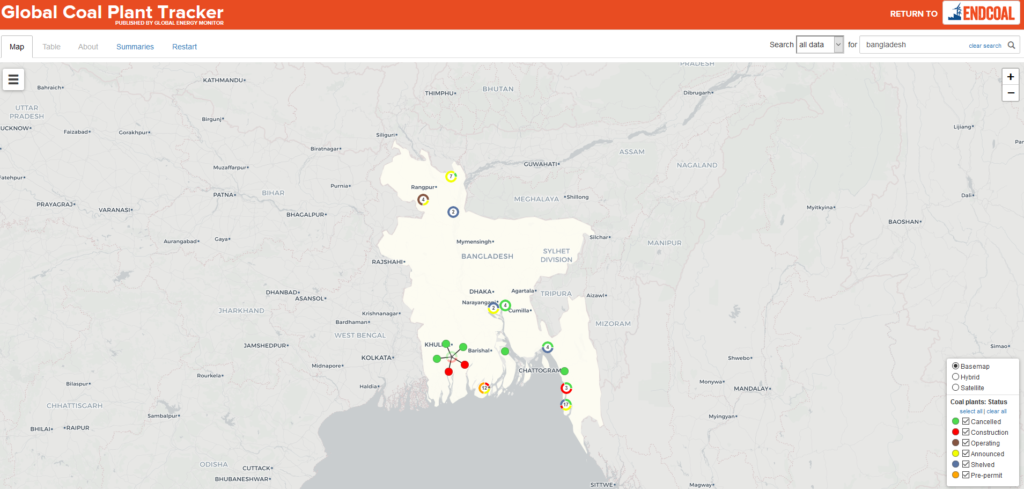
Bangladesh is also building a 2GW nuclear plant with support from Russia.
Why is Bangladesh not turning to renewable energy more readily?
Estimations point out that the country will be generating 58% more power by 2030 than needed if it continues to add coal- and LNG-fired power stations, raising the problem of overcapacity and significantly lower utilization of the new plants.
The net-zero goals of Bangladesh
Similar to many countries in the region, Bangladesh is suffering severe impacts of climate change. The country is particularly vulnerable to increased flooding related to sea-level rise and storm surge. As a result, Bangladesh should be increasingly looking to honour the Paris Agreement commitments.
Renewable Energy in Bangladesh: What is financially feasible?
The country submitted its Intended Nationally Determined Contribution (INDC) in 2015. It contained an ambitious greenhouse emission reduction target of 15% from a Business as Usual (BAU) level by 2030. 5% of the reduction is unconditional with the rest 10% being conditional (i.e., depending on the provided technical and financial support from the global community).
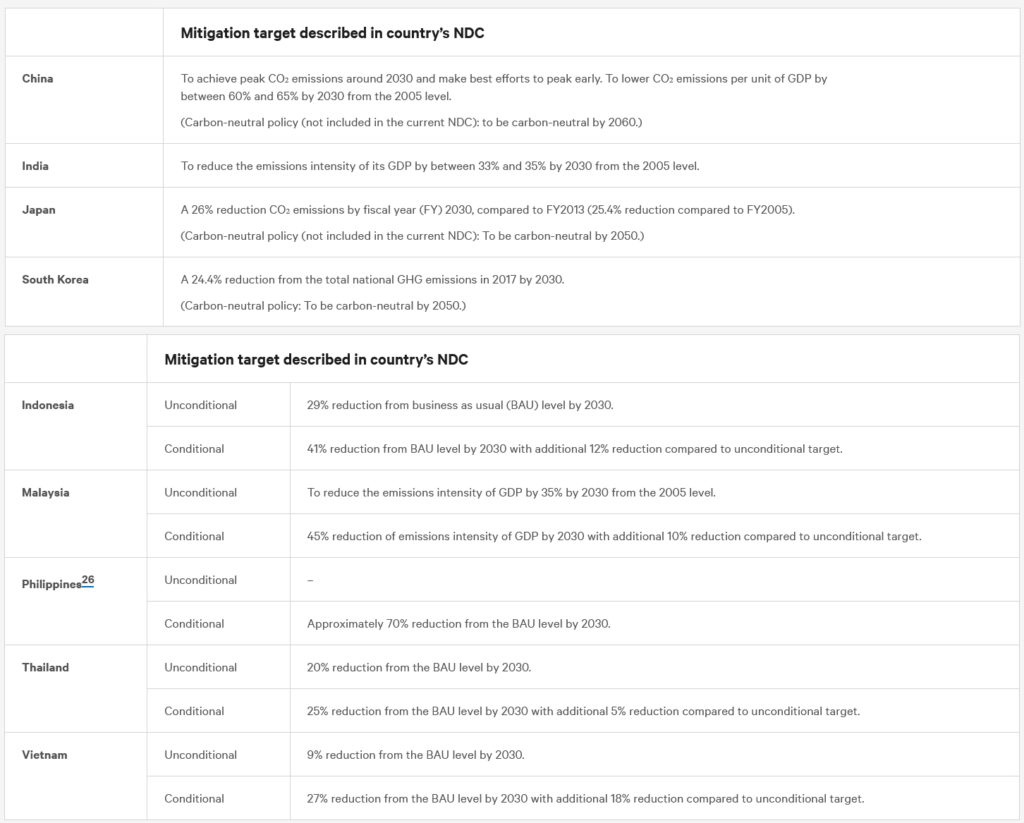
Differences in the renewable energy sector across Asia
While these figures were well below the targets of other Asian countries, at the end of 2020, Bangladesh submitted an updated version of its NDC. In a nutshell, it summarizes the different initiatives, key strategic policy documents, and mitigation actions taken by the present government to address climate change.
The Bangladesh National Action Plan (NAP) for Reducing Short-Lived Climate Pollutants (SLCPs) introduced a reduction of black carbon emissions by 40% and methane emission by 17% in 2030 compared to a BAU scenario.
The Renewable Energy Technologies in Bangladesh
While renewable energy in Bangladesh is slowly picking up pace, for now, its share in the total energy mix remains negligible. The renewable energy market is currently small, with 649 MW of installed capacity. According to EMBER’s data, as of 2020, wind and solar account for just 3% of the local electricity production.
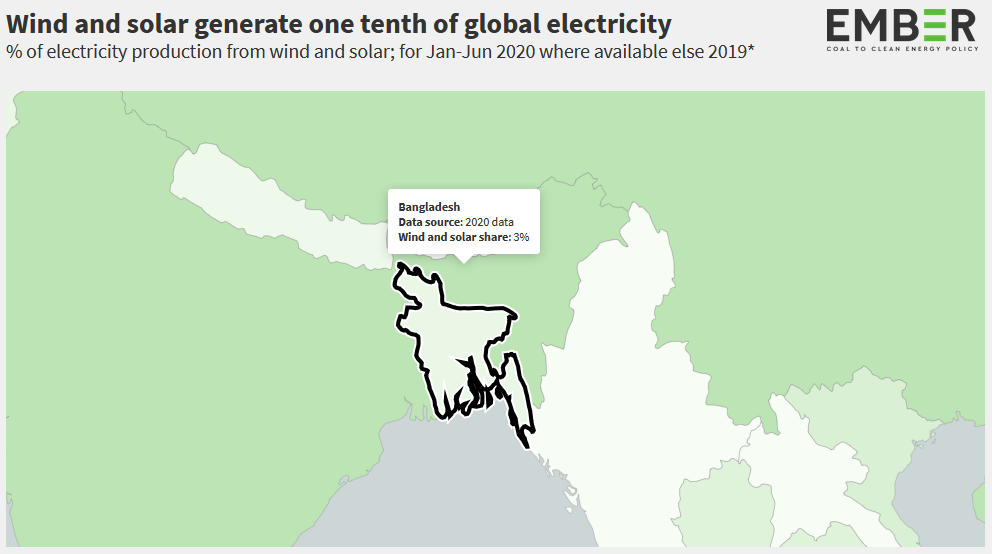
Renewable energy targets in Bangladesh
The country aims to raise the number to 10% by the end of 2021. However, according to Global Climate Scope’s analysis, the gap to target remains large. The platform ranks Bangladesh in the 41st position globally. It sits 12th among Asian countries (developed markets excluded) regarding renewable energy progress.
Why renewable energy in Bangladesh is slow to grow
All-in-all, the transition into renewable energy in Bangladesh leaves a lot to be desired. While the sluggish growth is partly due to natural factors like land scarcity and modest solar potential, administrative roadblocks also exist. Delays in getting project approvals, long-drawn land acquisition processes, high equipment costs, risk of cancellation, and scarcity of large-scale auctions are part of the barriers.
Opportunities for investments in renewable energy projects
According to Global Climate Scope, clean energy investment in grid-connected projects is starting to pick up. In 2019, USD $120 million went into clean energy projects, up from just USD $6.65 million in 2016.
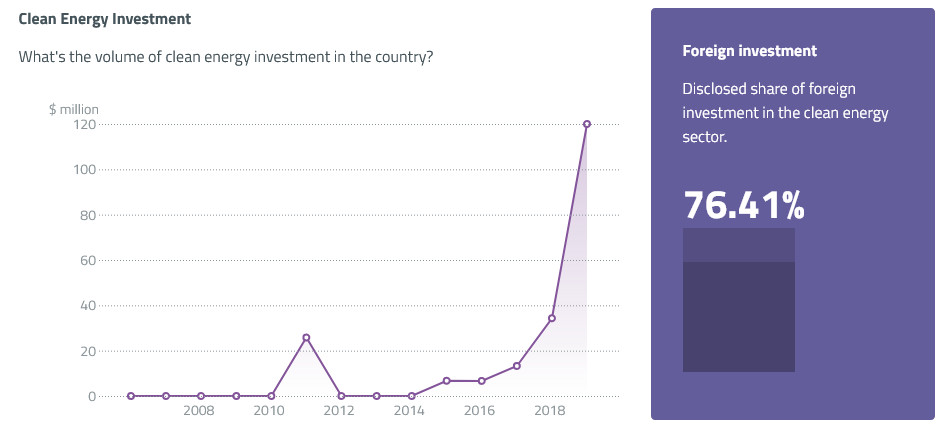
Renewable energy technologies- prioritising solar energy
The majority of the funds are flowing to solar energy projects. According to Climate Analytics, covering 1.5% of Bangladesh’s land area with PV panels could generate 3080 TWh of electricity. This is equivalent to 7x the total electricity consumption in 2016. A recent SREDA report highlighted that Bangladesh could develop 30 GW of solar power by 2041.
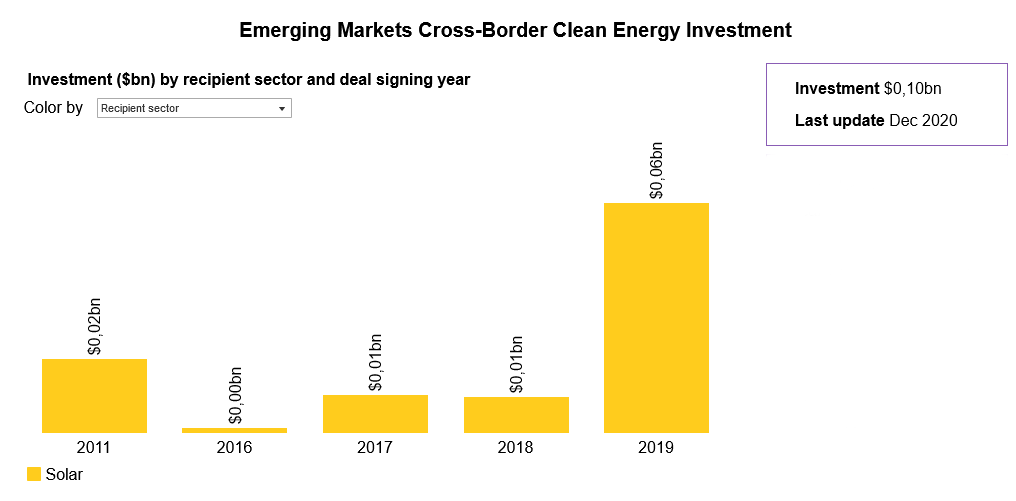
However, things are a bit different when it comes to wind energy. In fact, no new wind plants have been installed in Bangladesh in years. Announcements of new renewable energy projects are also lacking, except for a few instances where wind farms of 50 MW and 55 MW were approved for development.
Unexplored potential in the renewable energy sector
The relatively lower starting point puts investors in a great position to capitalize on Bangladesh’s rapid development and growing power demand.
This is a major opportunity for investors, considering that, according to estimations, the country could develop at least 1 GW of onshore wind. More thorough assessments reveal that Bangladesh have the capacity to build 30 GW of onshore and offshore wind.
Investments in renewable energy for sustainable development
Investments in renewable energy can help it emerge as the tool to speed up Bangladesh’s net-zero commitments. According to IEEFA, clean energy will indeed be the answer to the country’s growing needs. From a purely economic perspective, globally and regionally, renewable energy is already significantly cheaper than imported fossil fuels. The expected 5% to 10% drop in solar module prices in the next ten years means that renewable energy will not only become the cheapest form of new power in Bangladesh, but it will also be quick to build and in line with the country’s Paris Agreement targets. Renewable energy must be taken more seriously in the country.
You can learn more about the opportunities for renewable energy investments in Bangladesh in our dedicated article.
The Start of a Long Journey
Bangladesh’s renewable energy journey looks like one step forward, two steps back. The country has implemented energy policy incentives towards the deployment of renewables and turned away from coal imports. At the same time, it plans to develop domestic coal production and increase its reliance on LNG as a transitional fuel.
Renewable energy policies are lacking
We had talked extensively about why the idea of adopting LNG as a transitional fuel is irrational when we analyzed the false narratives around Vietnam’s renewable energy transition. Furthermore, such policies aren’t in line with the need to decarbonize the energy system and phase out coal for power generation by 2040.
by Viktor Tachev
Viktor has years of experience in financial markets and energy finance, working as a marketing consultant and content creator for leading institutions, NGOs, and tech startups. He is a regular contributor to knowledge hubs and magazines, tackling the latest trends in sustainability and green energy.
Read more